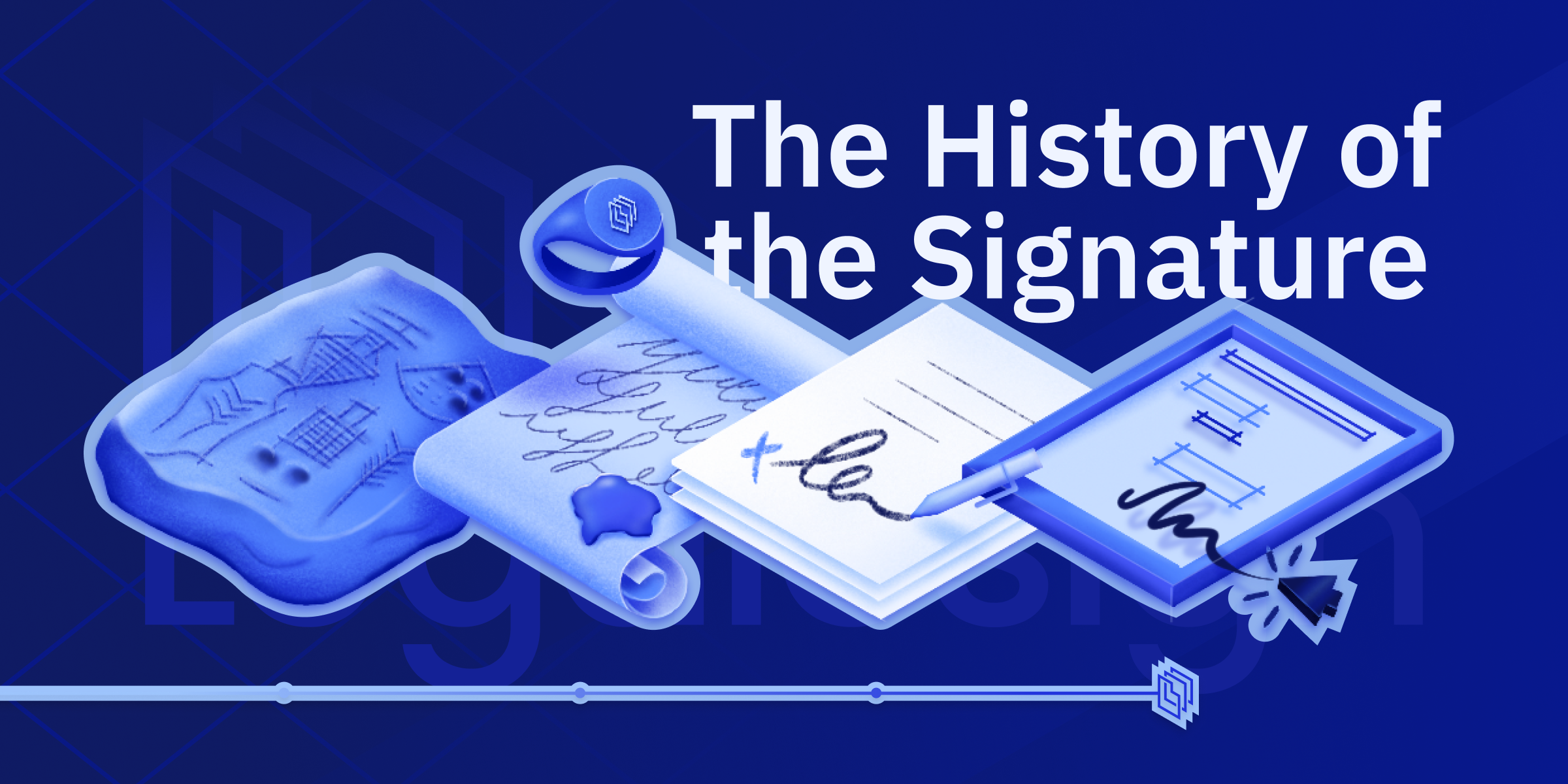More News
Signatures have been an important part of human creativity and identity for thousands of years. They were then as they are now a person's unique proof of identity and intent. Signatures have been used to authenticate documents, works of art, sign autographs or even just to write a birthday card. They don’t always have to be a person’s name, signatures could be symbols, seals or even fingerprints.
We take a look back at the changing face of the signature from the distant past to present-day.
1. Ancient scribe
Some of the earliest known examples of the signature used to validate an identity date back as far as 3000 BC. Cultures like the Sumerians and Egyptians began using a series of pictures and symbols – pictographs – to convey the identity of the creator. A Sumerian clay tablet, dating back to around 3100 BC, has the markings of an administrator called Kushim, making it one of the earliest definitive examples of using words and symbols to denote identity.
2. Greek and Roman influence
Writing and language was an important part of both the Greek and Roman cultures. The Phoenician alphabet – which contained 22 consonants and no vowels – was adopted by the Greeks around 1200 BC and within 600 years had evolved to the Latin alphabet we know today. However, although Romans were known to use signatures, emperors often used a signet ring to create a wax seal to certify documents.
3. First document signed in the Latin alphabet
It wasn't until 1069 that a signature in the Latin alphabet was recorded. Nobleman and military leader "El Cid" from Medieval Spain made a donation to the Cathedral of Valencia. At the end of the document, he signed his name to validate its authenticity.
4. Signatures obtain legal status
It was the Statute of Frauds Act passed in the English Parliament in 1677 that made the signature the everyday marker it is today. The new law stated contracts, wills and grants must be signed, a measure that during its time was an effective guarantee against fraud. By the time John Hancock put his famously elaborate signature on America's Declaration of Independence in 1776, the signature was a binding contract and used widely around the world.
5. A modern signature
Fast forward to the 1980s and technology was already rapidly changing the role of the signature. The rise of the fax machine meant more contracts were being scanned and sent electronically, and legislation in both the United States and United Kingdom changed to adopt this shift. More sophisticated technologies – such as the chip and pin system – replaced the traditional signature method for banking, helping to reduce fraud and protect personal security.
6. Electronic Signatures
By 2000, President Bill Clinton signed the E-Sign Act into law, which validated electronic contracts and paved the way for the global adoption of e-Signature technologies in businesses. The UK and European union soon followed by confirming the validity of e-signatures in law.
Today e-signatures are widely used to legally sign contracts, deeds and other documents. Organisations can securely send and sign documents from anywhere in the world and get them signed in minutes rather than days.
Just as symbols on clay tablets did in Sumerian times, e-signatures are providing a unique proof of identity and intent, but in a faster and more secure manner.
See how eSignature can transform your business – sign up for a free trial of our Legalesign platform today.
Sign-Up to Our Newsletter
Start Sending Documents with Legalesign Today
No Credit Card Required.

